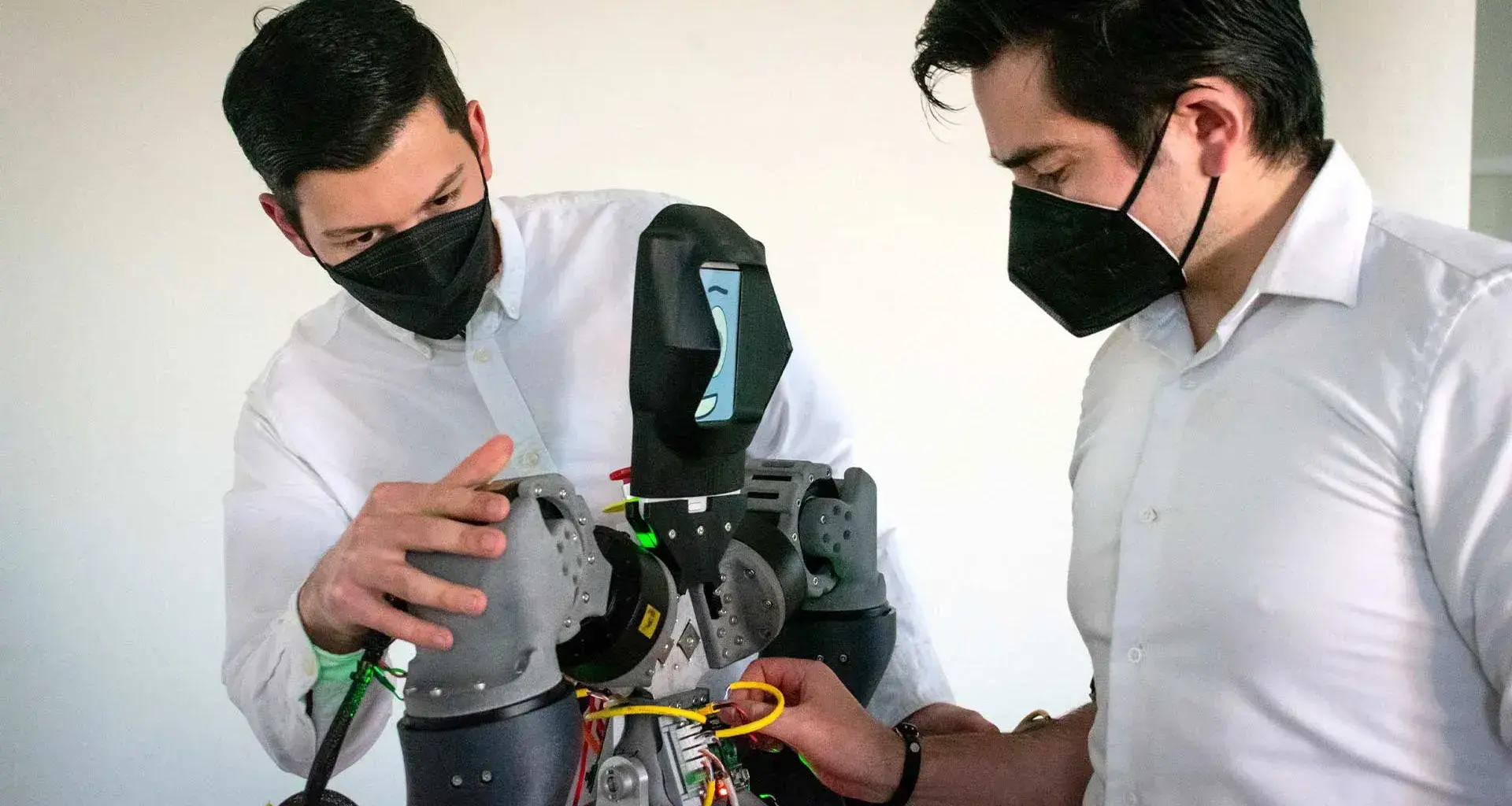Tec students and graduates from the Mechatronic Engineering program at the Tec’s León campus were responsible for making “Prometheus” come to life.
The INBIODROID team includes Ismael Sánchez, Juan Carlos Orozco, Carlos Hernández, Ernesto Aranda, Juan Carlos Díaz, Francisco Medina, and Alejandro Elías.
They are the only group of Mexicans representing their country at the ANA Avatar XPRIZE, a competition organized by XPRIZE, an organization that designs and manages contests to promote technological development, in collaboration with Japanese airline All Nippon Airways (ANA).
What is the project about?
“It consists of creating telepresence using an avatar system, removing issues of distance and allowing someone to be transported to any part of the world,” explained engineer Ernesto Aranda.
Teams must incorporate multiple emerging technologies to develop a physical, non-autonomous Avatar System, allowing an operator to see, hear, and interact with a remote environment as if they were really there.
The concept of a non-autonomous robot means that the entire system must always be operated by a human.
The challenge is divided into stages, with the first stage consisting of 300 teams that had to support their proposals with strategies and planning to be able to participate in the contest.
“We’re competing against teams from universities like Stanford, Boston, Cambridge, and Japanese research centers and companies,” said Alejandro Elias, a mechatronic engineering student.
Only 77 teams from 19 different countries made it to the second stage. INBIODROID is the only Mexican team on the list. To continue to the next stage, their robot has to be able to move and manipulate objects.
The final stage consists of robots being able to transmit what they hear, see, and feel to their operators, so that they feel as if they were in the same place.
![]()
The process
“This project is incredible! We’ve spent a lot of time planning, developing, and creating the project. It’s a unique and inexplicable feeling to be able to see it come to life,” Ernesto said.
Elías explained that the biggest difficulties were time and the current situation in Mexico, as companies and suppliers had halted operations, making it a quite challenge to get the right materials quickly.
“In addition to this, we also had to adapt very quickly, get the materials, and work hard to achieve the result,” shared engineer Francisco Medina.
The Mexican team is waiting to see if they have made it to the semifinals and can continue working on the PROMETHEUS avatar.
“This, like other international competitions, is an opportunity to improve our own abilities and capacities, face real problems and time and resource constraints, and put our interpersonal skills to the test,” said Camilo Duque, the Mechatronic Engineering program director.
What happens next?
Engineer Carlos Hernández explained that they have invested a lot of time and effort in the project, but that there is still a lot to do.
What they have to do next is integrate the robot with the exoskeleton worn by the user, solving the challenges of long-distance, high-speed wireless connectivity.
The team is also developing a ground-breaking lower body (legs), using state-of-the-art technology and making use of recent research in robotics.
“The project has a lot of potential. It can be scaled up and we can develop many things. We’re ready to take it to the next level, develop the lower body, and compete against any challenge that comes our way,” said the engineers.
“We’re proud of Prometheus because it’s technology developed in Mexico, and the result of a great deal of enthusiasm,” Hernández concluded.
“These young people have shown us that Mexico has the potential to develop this type of technology. They’ve gained experience in robotics competitions against the best in the world and are among the best in the world in their field,” concluded Duque.
You’ll definitely want to read:





